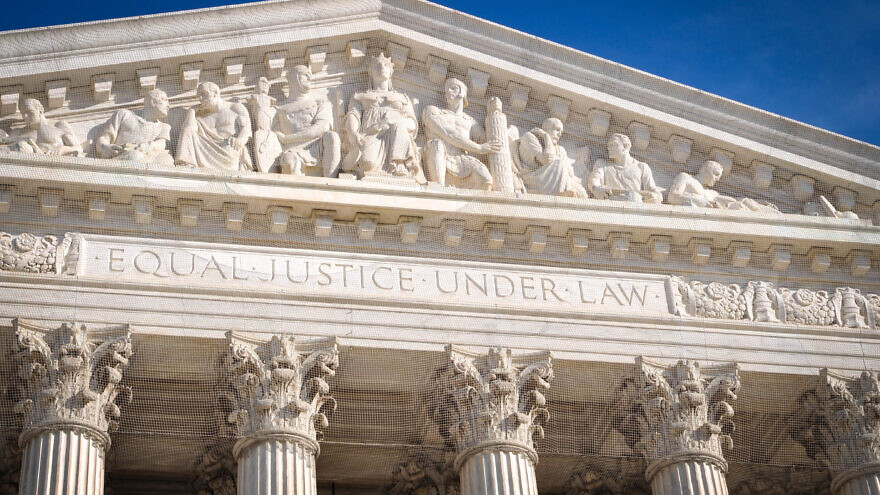Published on July 19, 2023 by JNS.
On June 30, I retired from my medical practice, having graduated medical school 41 years earlier. It was a wonderful career and I was privileged to have taken care of so many people.
That very day, the U.S. Supreme Court struck down race-based affirmative action.
What do those things have to do with one another?
Here is my story:
In 1973, I applied to a six-year biomedical program at the City College of New York. My high school, Lafayette, had 1,221 students in our graduating class with two college advisers. Very few were accepted to the “Ivies.” Bensonhurst Brooklyn was a lower-middle-class neighborhood before any part of the borough was gentrified.
As a self-motivated student, I sought ways to “move on up.” In the provincial world I lived in, where Manhattan was “The City” and we knew not a soul living on the Upper East Side, professional schools were the ticket out.
So, I applied to the Sophie Davis Center for Biomedical Education at City College, was placed on the waiting list for admission and eventually turned down. Nothing ventured, nothing gained. Instead, I attended the State University of Stony Brook in New York as a pre-med.
At the end of my sophomore year, I received a letter asking if I wanted to enroll in the six-year program, from which I was rejected almost two years earlier. It was “manna from heaven.”
Unbeknownst to me, two highly qualified students had sued the school for reverse discrimination due to the use of racial quotas for admission. The case was on its way to the Supreme Court before the famous Baake decision on affirmative action in 1978, but never made it that far because the school decided to settle the case.
Why?
According to the presiding judge’s opinion, “Members were unlawfully denied admission to the Biomedical Program of the Center for Biomedical Education of the City College of New York for the 1974 academic year. The complaint charges, inter alia, that the defendants intentionally discriminated against Caucasian and Asian applicants on racial grounds and, more specifically, had a predetermined quota for black and Hispanic applicants.”
In the section under Conclusions of the Law, Unlawfulness of the Discrimination: Equal Protection, the judge wrote, ”The intentional racial discrimination found by the court cannot withstand scrutiny under the equal protection clause.”
I was unaware of and never informed about the lawsuit during my first two years of college. Nor was I told that I was initially admitted to the program but then rejected when the school applied their racial quotas. I learned later that I was known as the first white alternate, the next white who would have been admitted if another white student declined admission.
The six-year program at City College was affiliated with many of the medical schools in New York State for the “clinical years”—the third and fourth years of medical school. So, I decided to call the dean of the Stony Brook Medical School and told him my story. He was surprised and very helpful.
He invited me to meet him but said he would not tell me what to do, just come with my transcript. He would hold a mock interview to see if I would likely get accepted by the conventional route. After meeting and interviewing me, he told me I would probably be admitted to the medical school on my own, but I should take the offer from the Sophie Davis Center for Bio-Medical Education.
After saying he wouldn’t tell me what to do, he changed his mind. He said, and I have never forgotten, “You are white, you are Jewish, you are a male, you come from Brooklyn—take this, it’s a sure thing.” Thank you, Dean Kushner.
That is how I became a physician.
Over the next 40 years, race-based affirmative action discriminated against tens of thousands of students who were not afforded equal protection under the Fourteenth Amendment. The altruistic goal was to alter unequal outcomes presumed to result from historical injustices, but discriminating against someone based on color to advance another person is still discrimination.
There was and is an appropriate remedy for disadvantaged young people, whatever their skin color: Socioeconomic affirmative action, which will disproportionately help young people of color gain entry into higher education. Picking winners based on race is degrading, tarnishing the accomplishments of black Americans who are perceived as having been given a leg up even if they didn’t need it. The Obamas’ daughters don’t need racial preference. Let’s also end legacy affirmative action that disproportionally privileges white and wealthy applicants.
Affirmative action based on race was never supposed to be permanent. As a society, identity politics has torn us apart. A culture of victimhood rots a society at its core. Words like “colorblind,” being “judged by your character, not color,” and “melting pot” are considered racist. They are not. Racism exists, but most white Americans are not consciously or unconsciously racist as the 1619 Project and Critical Race Theory agenda claim.
America is an exceptional nation, and our goal is to give everyone, regardless of background, an equal opportunity that takes their socioeconomic and educational disadvantages and life experience into consideration. Defining justice as equal outcomes is a toxin that will ruin this country.
After 50 years of race-based preferences and reverse discrimination, it is time to transition to an America that treats everyone equally regardless of color, whether in education, job opportunities or how we treat one another.
